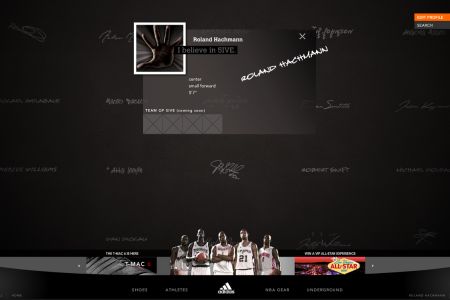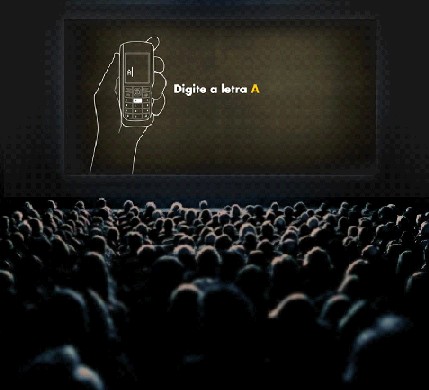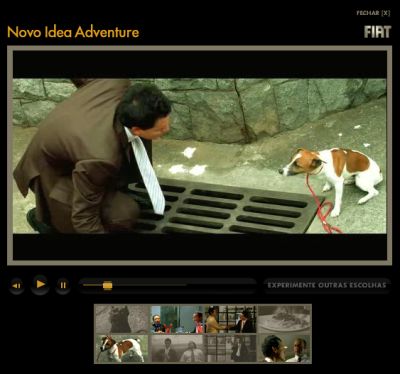von Roland Hachmann | Nov. 25, 2006 | Ad News, Blog, Digital Marketing, Digital News, Mobile Marketing, Online Advertising
Robert Passikoff writes about seven brand and marketing trends for 2007
He starts of with a nice quote:
Nobel Prize winner Niels Bohr once noted that “prediction is very difficult, especially about the future,�
And then continues pitching his company USP:
but then he didn’t have access to predictive loyalty metrics. Happily, we at Brand Keys do.
The 7 trends are (*drumroll here*):
- An ongoing emphasis on “engagement.�
- More reliance on consumer-generated content.
- More, more branded entertainment.
- Media planning will become more “touch point� focused.
- Using technology and engagement to better communicate with consumer expectations.
- Expanding the potential of Websites, blogs, and the digital world.
- Innovation and loyalty will matter more.
Sounds good. But there is nothing really new in this. The only difference being, that these trends will probably now reach a certain visibility among marketers so that we’ll see a lot more campaigns, tactics, etc. around these 7 points. I am certainly looking forward to that.
von Roland Hachmann | Nov. 22, 2006 | Ad News, Blog, Digital Marketing, Online Advertising
Another nice campaign pointed out to me by Adverblog: Adidas wants to know if you believe in the 5:
A new Adidas website by EVB for Flash and basketball fans. „Do you believe in 5?“ starts with a great video, and develops in a website which aims at having basketball players sharing the ideas and ideals they believe in.
I have already added myself to the wall, though I didn’t pick the most creative name (I didn’t know that this name would actually be put on this wall, since I never read instructions with these kind of things).
Seems like this whole community is still largely work in progress… There is a lot of „coming soon“ in the profiles.
von Roland Hachmann | Nov. 21, 2006 | Ad News, Blog, Digital Marketing, Digital News, Mobile Marketing, Online Advertising
Wow, this sounds great:
…the six-minute-long interactive movie is in the „choose you own adventure“ style and generates 16 different endings depending on the choices of the audience. During the adverts the audience are given 4 different questions to answer and which they need to text to a given number. The final version of the movie is compiled from the clips that gather the most votes (which is all handled digitally). (via Adverblog)
There also is a campaign site offering the same for the home viewer. First, you select which type of scenes you want (my portuguese is not so good, so I just chose randomly):
and then you can see your „selfmade“ movie:
Even though the idea of the campaign site is nice, the WOW-effect of sitting in a movie theater and being able to influence what’s on the big screen is of course much more amazing.
However, I hope they let it run 2-3 times at least, because if they only do that once, you won’t be able to getting a feeling how the movie changes from time to time and might even assume that it’s the same movie every day…
von Roland Hachmann | Nov. 19, 2006 | Ad News, Blog, Digital Marketing, Digital News, Online Advertising
Jason Calacanis writes about the „real story“ of Advertising 2.0:
The real story of Web 2.0 has little to do with the bells and whistles and everything to do with the stunning growth of online advertising.
He provides a graph with online ad spent per year since 1997 and puts a straight line from ’97 until today, which is, of course, a steep, straight line. (I hope he doesn’t analyse his real money investments the same way!)
He also doesn’t think that the spike over the past year is another bubble, but instead says that the curve is just getting steeper in future, for the following reasons:
a) there are more advertisers online today.
b) it’s getting easier to spend money online
c) Google Adsense/Adwords (a huge part of part B above)
d) Yahoo, MSN, AOL, and Google reaching scale, which in turn allows major advertisers to reach comparable audience sizes to TV
e) audiences shifting from TV, radio, and magazines to the Internet.
All of these seem plausible. Of course one might say: „we thought the same back then in 2000, just for different reasons“, but Jason also shows a second graph with a line ca. 15% less steep, which still is impressive. He suggests to believe the long-term hype and I agree.
Growth rates are probably going to be huge for while. Not necessarily because the medium is more attactive than others (though I think it is at least for some purposes), but purely because there still is a long way to go, until the medium is an everyday medium like the other media – both for the broad audience and for marketers.
(via)
von Roland Hachmann | Nov. 11, 2006 | Ad News, Blog, Digital Marketing, Digital News, Online Advertising
Marketing.fm wants to revise a famous quote by John Wanamaker:
Half the money I spend on advertising is wasted; the trouble is I don’t know which half. -John Wanamaker, US department store merchant (1838 – 1922)
I know the quote, of course, as I suppose everyone in advertising does. But I didn’t know it was of someone as unknown as this chap. On the contrary, I was almost tempted to assign the quote to Mark Twain, purely because lately if feels like most thoughtful quotes come from Mark Twain, as if he is some sort of a quote-goat anytime people don’t know the real source.
In the same blog post, they write:
The advent of interactive media and online measurement has allowed marketers to target advertising messages much more precisely. Morover, it is possible to access comprehensive data on the viewers of your campagin: page views, geographic location, clicks, links, etc.
Is it time that we revised the 50/50 Wanamaker quote? Should it be more like 70/30 now?
I ain’t sure that the hard measurements that the web provides, should redefine investments alone. This might sound strange coming from someone working in digital marketing. But if you think about it: applying these measurements, you de-value the web to a purely interactional medium (which it is, most of the time, admittingly). However, by that you omitt all the effects of the contacts people have with your brand that cannot be exactly measured:
- The impression an ad made with that one page view, even if the user didn’t click on it.
- time spent interacting with the ad piece all together
- triggered purchase consideration, fulfilled in brick&mortar store
Online Advertising can be measured and therefore it should be. Always.
But we should not forget, that there are so called key performance indicators that can help us understand the effect of advertising, and that can’t be measured by interaction, but purely by qualitative research. Asking the target audience about their perception of the brand, the channel interaction, etc.
Classical Advertising has been working with this kind of research all the time. And while it never helped to solve the puzzle of where the 50% of investments „got lost“, I think, purely relying on data measured through interaction, will not help either. It sounds more like a quick fix of Marketeers trying to answer tough questions by providing hard results – irrespectively of context.
von Roland Hachmann | Okt. 12, 2006 | Blog, Digital Marketing, Online Advertising
Joseph Jaffe is asking us to take part in his „exercise in futility“.
He asks us to leisurely watch television and then answer a few apparently easy questions:
- how many commercials in totality do you think you watched?
- how many commercials did you remember?
- of these commercials, how many brands did you remember (as opposed to „the one with the bunnies“
- of these commercials, how many do you think told you something you didn’t know, offered up something of value, made you think differently about the brand and/or made you want to buy (or consider to buy) that particular brand/product/service
- Bonus assignment: did any one or more commercials strike you as being particularly original, progressive, innovative in terms of message, call-to-action etc.?
I can see his point. But do take into account: if there was a similar questionnaire about regular online advertising, the result would be similarly bad (or even worse). If I read his book right, then his point is more about the irrelevance of this kind of advertising. Push advertising, unasked for, without any engaging element to it…





 Wo ich sonst so bin...
Wo ich sonst so bin...